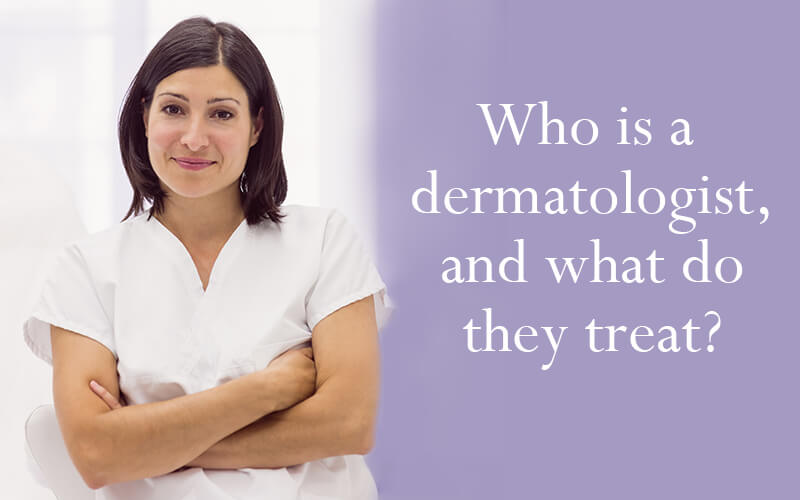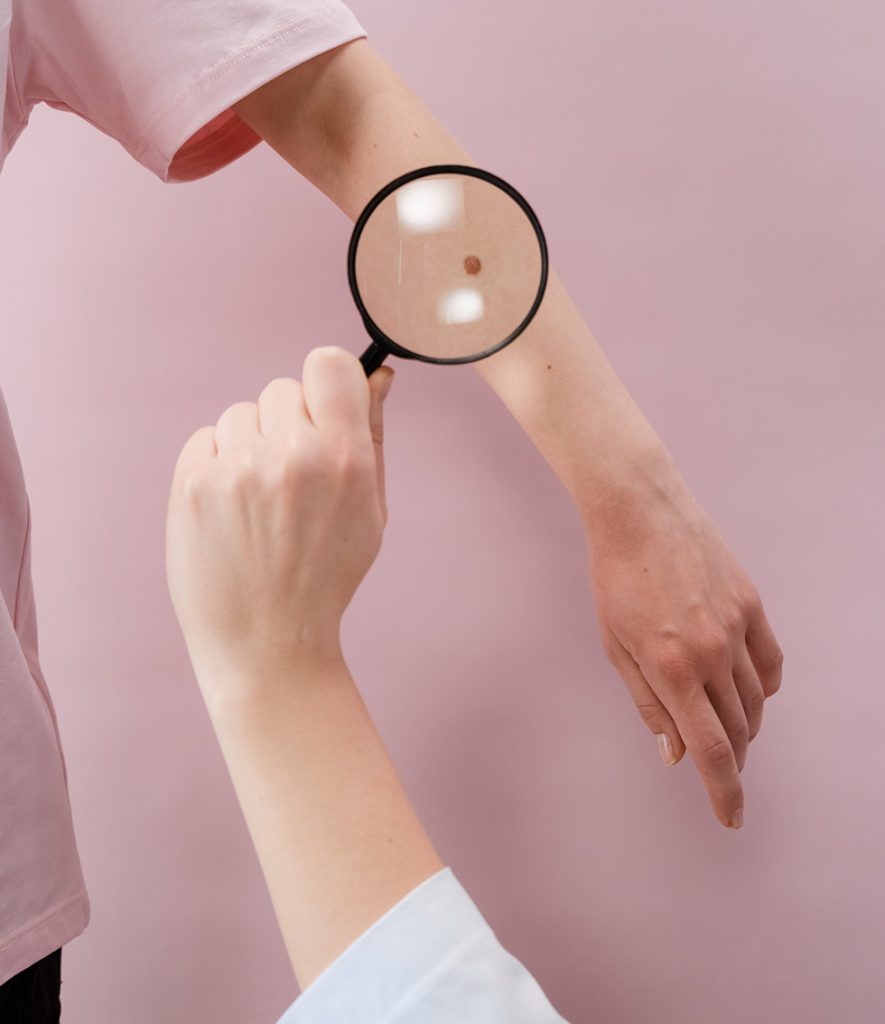Comprehensive Dermatology Expertise: Attending To Acne Issues, Mole Concerns, and Dermatitis Symptoms
When it comes to skin health and wellness, comprehensive dermatology expertise is vital; it encourages individuals to take on typical skin issues such as acne, mole abnormalities, and dermatitis with self-confidence. Comprehending acne therapies, recognizing potential skin cancer cells check in moles, and managing dermatitis triggers can considerably enhance skin wellness - eczema specialist. This post will certainly discover these topics, using an insightful check into the science behind these typical skin worries - an expedition that promises to enlighten and educate
Recognizing the Fundamentals: What Is Acne, Moles, and Eczema?
While numerous individuals might recognize with the terms acne, moles, and eczema, comprehending what they actually are is a various matter altogether. Acne is a skin problem defined by irritated or infected oil glands, often noticeable as pimples or areas, largely on the face, back, and upper body. Moles, on the various other hand, are small skin growths caused by collections of pigmented cells; they can show up anywhere on the body and vary in shade and size. Last but not least, dermatitis, additionally called atopic dermatitis, is a persistent problem creating inflamed, scratchy skin, usually happening in feedback to toxic irritants or irritants. While these conditions prevail, they can have varying levels of extent and effect on a person's life.
The Scientific research Behind Acne: Causes, Kinds, and Therapies
The facility scientific research behind acne begins with understanding its formation device. This intricate process, affected by numerous aspects, causes various kinds of acne. The write-up will certainly also discuss effective therapies offered to handle and treat this usual skin disease.
Acne Formation System
An overwhelming majority of people will experience the usual skin disease known as acne at some point in their lives. Acne development begins with the overflow of sebum, an oily compound secreted by sebaceous glands in the skin. This excess sebum, in addition to dead skin cells, clogs the skin's pores. When these clogged up pores come to be contaminated with Propionibacterium acnes, a microorganism normally present on the skin, inflammation occurs, causing noticeable acne. There are various sorts of acne, including blackheads and whiteheads (non-inflammatory), and papules, pustules, blemishes, and cysts (inflammatory) Hormonal modifications, especially during adolescence or menstrual cycle, can intensify acne by causing increased sebum manufacturing. Recognizing this system is vital for creating reliable therapies, a topic to be discussed later on. mole removal.

Effective Acne Therapies
Nearly everyone will certainly come to grips with acne eventually, making a clear understanding of effective acne treatments essential. Various therapies target various elements of acne, such as inflammation, oil production, and germs. Topical treatments like benzoyl peroxide and salicylic acid can remove bacteria and unclog pores. Prescription antibiotics can deal with swelling and microorganisms. For severe situations, isotretinoin, a powerful medicine, can lower oil manufacturing. Non-drug treatments include light therapy and chemical peels. It is very important to keep in mind that not all treatments will function for every person, as acne's causes and intensity differ. Therefore, dermatologists usually customize treatments to individual needs. Regular usage of the selected therapy and perseverance are vital to seeing enhancement.
Mole Issues: Identification, Assessment, and When to Look For Medical Interest
Moles, common skin growths, call for mindful recognition and regular evaluation for optimal skin wellness (mole removal). Acknowledging the typical appearance of one's moles, along with any kind of changes that may occur, is important. Trigger clinical focus should be looked for when certain signs, which will certainly be reviewed, are discovered
Recognizing Mole Recognition
Exactly how does one compare a safe mole and one that may need clinical interest? Comprehending the features of typical moles is crucial. A regular mole is usually round or oval, has a smooth edge, and is no larger than 6mm in size. The shade needs to be regular and can differ from pink, tan, brownish, or black. Moles generally show up throughout childhood years or adolescence, and by adulthood, many people have between 10 to 40 moles. However, moles that alter in size, form, or shade, become scratchy or bleed, or appear after age 30 can be worrying. These irregularities do not immediately show skin cancer cells but are reasons to seek advice from a dermatologist. Comprehending mole identification is the first action in skin wellness management.
Carrying Out Routine Mole Examinations

Recognizing Important Medical Signs
When should one look for medical interest concerning moles? It is necessary to seek advice from a skin doctor once uncommon functions are noticed. These might include asymmetry, uneven boundaries, differing colors, a diameter larger than 6mm, or progressing size, form, or shade. Known as the ABCDE's of mole evaluation, these changes may point to deadly cancer malignancy, a lethal form of skin cancer cells. Additionally, any blood loss, itching, or non-healing sores related to moles necessitate prompt clinical focus. An individual should likewise beware if new moles appear after the age of 30 or if there's an abrupt boost in the number of moles. Routine soul-searchings coupled with professional analyses guarantee early discovery and reliable therapy of potential skin problems.
Eczema Explained: Causes, Signs And Symptoms, and Managing Flare-Ups
Although eczema may show up as a straightforward skin irritability to the untrained eye, it is, in reality, an intricate dermatological condition with a wide range of prospective reasons. Eczema, likewise referred to as atopic dermatitis, is usually triggered by a combination of hereditary and environmental factors. Signs can vary from light dry skin and itchiness to serious rashes and swelling. Triggers may range individuals, however common ones consist of allergens, irritants, and anxiety. Taking care of eczema normally entails identifying and avoiding triggers, preserving a good skin care regimen, and using prescribed therapies. Due to the persistent nature of eczema, flare-ups might still happen also with cautious administration. The trick is to deal with these flare-ups quickly to stop worsening signs.
Practical Skin Treatment Tips to Protect Against and Take Care Of Acne, Moles, and Dermatitis
Recognizing and resolving skin conditions such as acne, moles, and dermatitis need useful and effective skin care habits. A balanced diet plan rich in antioxidants can enhance skin health and lower inflammation, possibly reducing acne and eczema seriousness. Routine skin checks help in my explanation early mole detection, possibly stopping skin cancer.
Professional Dermatology Treatments: An Overview of Modern Solutions
Skin doctors today have a broad range of efficient therapy choices read what he said to deal with numerous skin conditions. With moles, expert elimination is done if they present a health danger. All these therapies are under the specialist guidance and care of skin specialists, making certain secure and effective monitoring of skin conditions.
Conclusion
Understanding skin-related worries like acne, mole irregularities, and dermatitis is crucial for effective treatment. Acne monitoring requires expertise of various therapy alternatives, while mole examination can cause early detection of skin cancers cells. Dermatitis monitoring entails recognizing triggers and applying appropriate treatments. Extensive dermatology knowledge is essential for stopping and managing these skin problems, emphasizing the demand for professional dermatologist care to improve skin health and wellness.